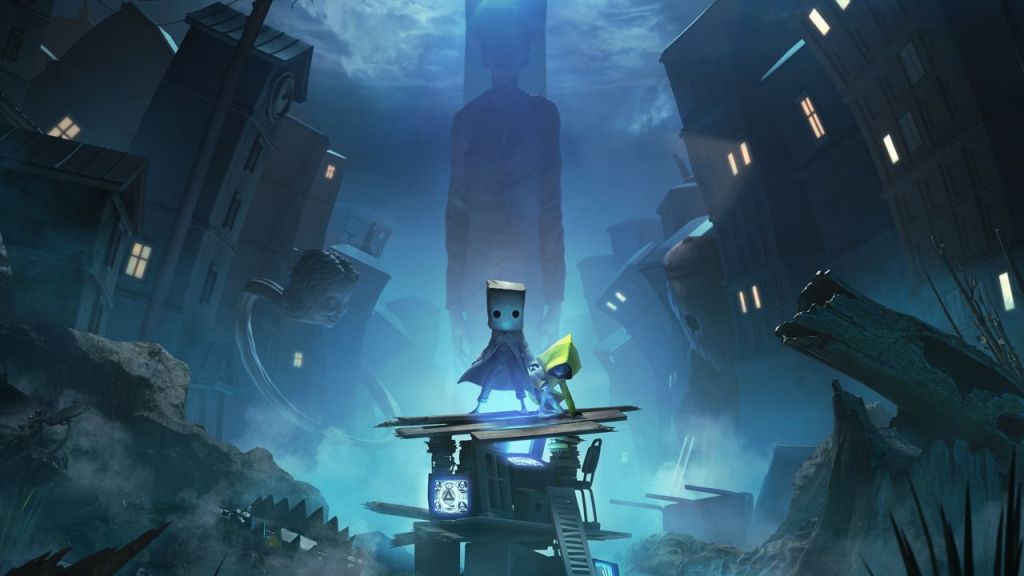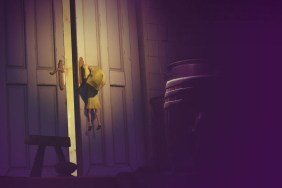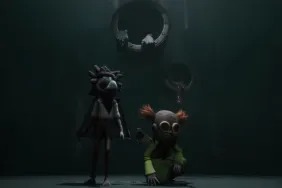Tarsier Studios’ first independent project was Little Nightmares. The puzzle platformer focused on Six, a little girl in a yellow raincoat who was stuck on an underwater vessel full of horrors. Little Nightmares II is a sequel of sorts; a larger experience with a new equally horrible location, new protagonist, and much the same gameplay as before. The good news is the sequel solves some of the complaints from the first title, but not all of them.
Mono is a young boy clad in a drab beige raincoat. We know he’s called Mono only from the game’s promotional material, just like Six in the last game. He’s almost completely silent and he’s never formally introduced. Regaining consciousness surrounded by broken television sets in the middle of a dark forest, Mono is revealed as just a tiny figure in a world full of dangers much larger than he ever will be.
Little Nightmares II Review – A Whole New World
Mono is stuck in a dark and ominous world much larger in scale than The Maw ever was. The game’s five chapters mostly take place in a city distorted by the humming coming from the distant Signal Tower. It’s a world that disgusts, full of decaying buildings with furniture many times larger than Mono and worrying amounts of rotting flesh piled in the corners. All signs point to humans just vanishing, abandoned clothes, toys, and other belongings littering the environment. The few humanoid creatures left behind are possessed by the noise coming from the television sets still capable of displaying a picture.
The secrets this world holds are gradually revealed as Mono makes his way through the forest and into the city. Here he finds Six trapped in a bedroom. Initially fearful, she then joins him as they attempt to find the tower, stop the signal, and escape the confines of the city. This AI companion adds a new element as the pair must work together to solve some puzzles.
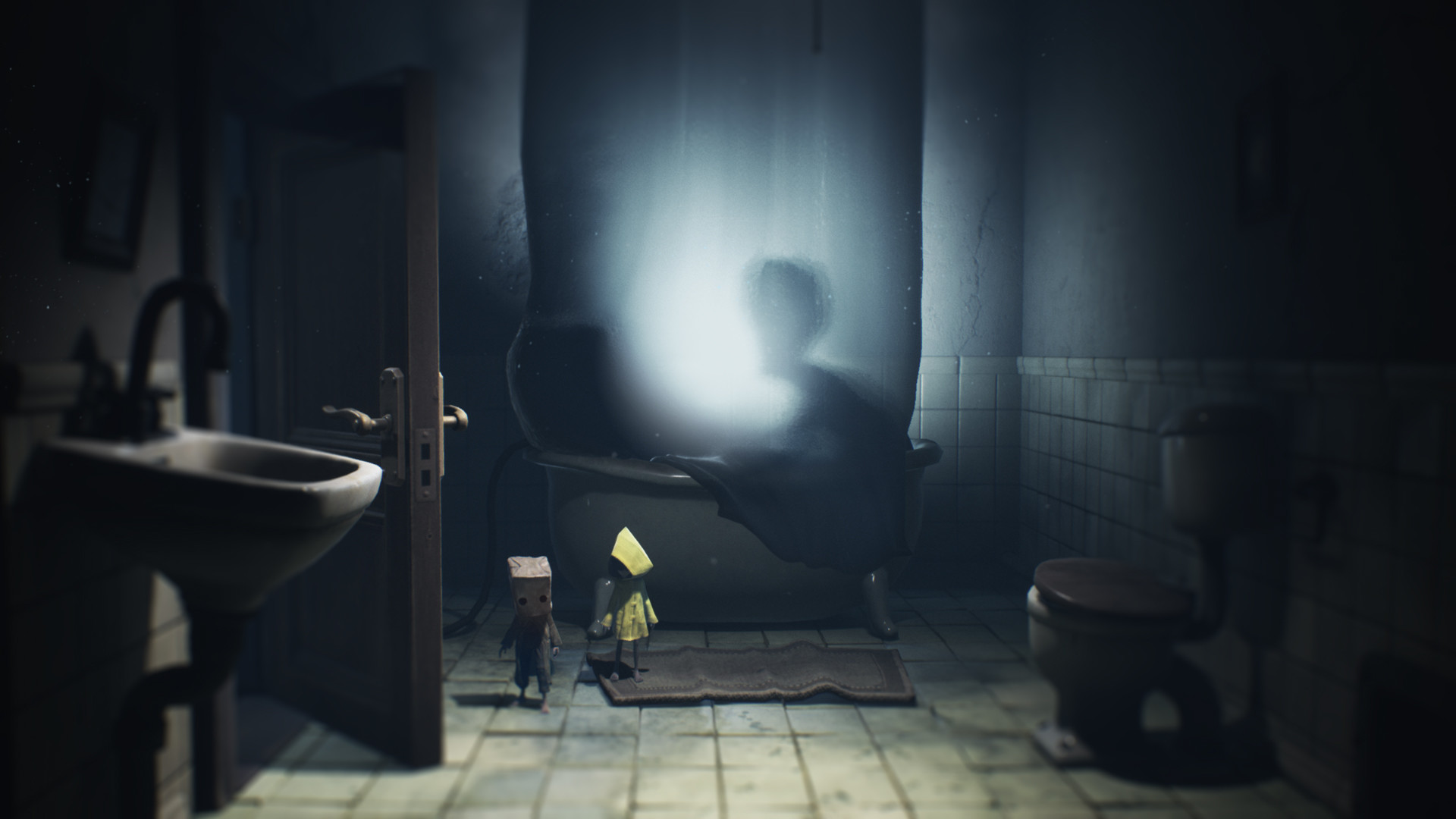
You can never control Six, but the only time Mono uses his voice is to summon her to places you want her to stand. This doesn’t always work but Six is far from a liability; an unusually reliable companion, she knows what to do anyway, without the need for any prompting. Those hoping for co-op play may be disappointed, but with the way the story plays out with Mono often having to venture off on his own, implementing satisfying two-player co-op would have been impossible.
Aside from the new AI companion, the core gameplay is mostly the same as Little Nightmares. The game is a 2.5D puzzle platformer where you start to look at everyday objects in a different way. Doors are rarely used as exits, with windows and vents often being the preferred escape route. Tall drawer units and shelving units make convenient ladders. Pull cords allow Mono to swing over large gaps. Bars of soap and toilet rolls can be thrown at switches to activate them. There’s little flexibility here; puzzles are often solved the way the developer wants you to solve them, but that’s not a bad thing by itself. The main issue is still how much trial and error it often takes to find the solution because there’s no guidance.
Little Nightmares II Review – No Solution is Too Stupid
The solution is nearby, often found in the very room in which the pair are standing, but with the amount of spare debris in each room, it’s frequently very cleverly hidden. On numerous occasions I resorted to wandering around the room while holding R2 to see if Mono would pick anything up. There’s a huge sense of satisfaction when you finally stumble upon the solution but there is more luck involved than there should be. The platforming can still be irritating too. The small Z-axis means it’s really easy to get slightly the wrong angle when jumping over a gap, plummeting to Mono’s death through a hole in the floorboards or down a never-ending abyss.
Instant death is a frequent recurrence and never ceases to be frustrating, especially during chase sequences. Here you will often die the first time before you work out what you need to do. Then you’ll die again because you didn’t do it quickly enough. After that, you’ll be caught after you accidentally ran into the wall rather than through the vent. Maybe you’ll then die again because your finger slipped off the joystick while trying to slightly change the angle at which you’re running. The controls are fiddly, not least because you spend a lot of time hanging from ledges or climbing and you must hold down the button all the while otherwise you’ll lose your grip. Hand cramp is a real issue. At least when you die, one of this game’s major improvements is that checkpointing is automatic and very generous, so little progress is lost. Load times are much shorter now than in the past too.
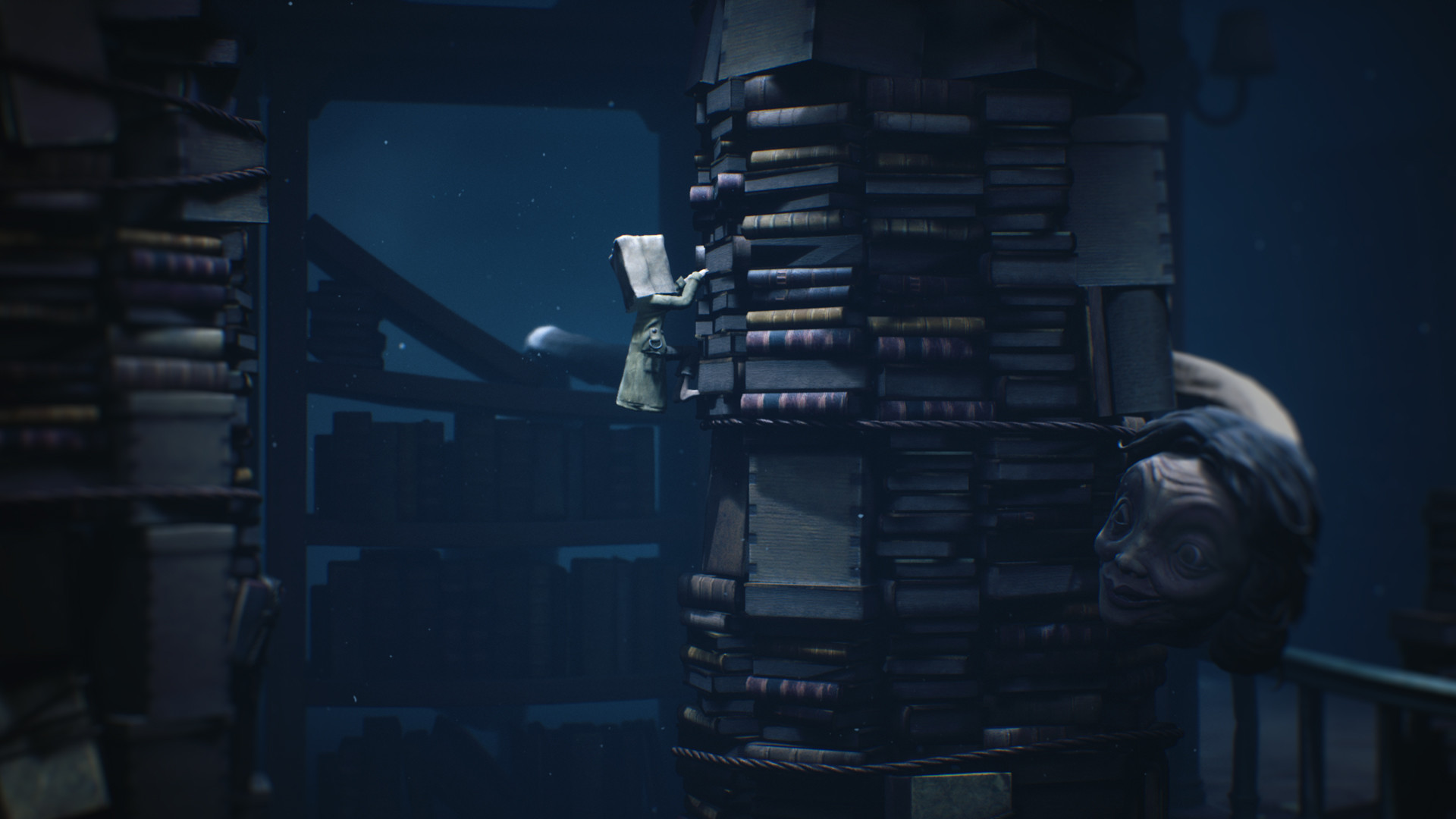
Aside from Six and a brief appearance from a Nome for those who install the Nome’s Attic DLC, all the rest of the world’s occupants are new to the sequel. The porcelain child Bullies are nasty in nature but physically fragile, relentlessly picking on each other (and Mono) but taking a single hit to dispatch. Then there are the dismembered Living Hands who move across the floor with surprising speed and have a talent for face hugging. Mono can now fight back against both of these using a weapon conveniently left lying around, so he’s not completely defenceless.
Combat is a new feature for Little Nightmares II, but it’s clumsy and slow. It makes sense to make the oversized weapons deliberately cumbersome to wield, yet every hit must be a precisely timed strike. If you commit to a swing and miss, there are rarely any second chances. It’s also incredibly infuriating when the weapon seemingly goes through the enemy without registering a hit, or they sidestep your swing at the last minute. I often got the urge to put the game down after constantly replaying these segments with only my stubborn refusal to give up being the thing keeping me going.
Little Nightmares II Review – Try and Try Again
Encounters with the light-sensitive wooden mannequin Patients are less scripted and the most terrifying of the lot. The Viewers are glued to the tv and woe betide you if you interrupt their trance. Both need different strategies that I won’t spoil. The most notable enemies, though, are the “boss” enemies who you spend most of your time avoiding in a life or death game of hide and seek. The intimidating Hunter chases the pair through the forest, never hesitating to take a shot if he sees them. The grotesque Teacher has a never ending neck that means she can see into surprising places. Thanks to Tarsier’s unique designs, each character is memorable although you often can’t wait to see the back of them.
The story is approximately double the length of that in Little Nightmares but doesn’t overstay its welcome. Players will take slightly longer if they look for the hidden areas that contain hats or holographic Kids that Mono can absorb into himself. While the story is concluded completely, things are left open for the possibility of a third game in the franchise. Maybe by the time that rolls around, there won’t be as much need for trial and error puzzling, or for accidental platforming deaths. For now, those who enjoyed the first title will likely love the second. Others will perhaps find it a bit too frustrating to see things through to the end.
Little Nightmares II review copy provided by publisher. Reviewed on PS5 via backwards compatibility. For more information on scoring, please read our Review Policy.
-
Longer game that still doesn't outstay its welcome
-
Six makes a great AI companion
-
Brilliantly designed enemies
-
Quicker load times
-
More frequent automatic checkpoints
-
Too easy to make mistakes while platforming
-
Puzzles involve a lot of trial and error
-
Combat is clumsy yet requires precision
